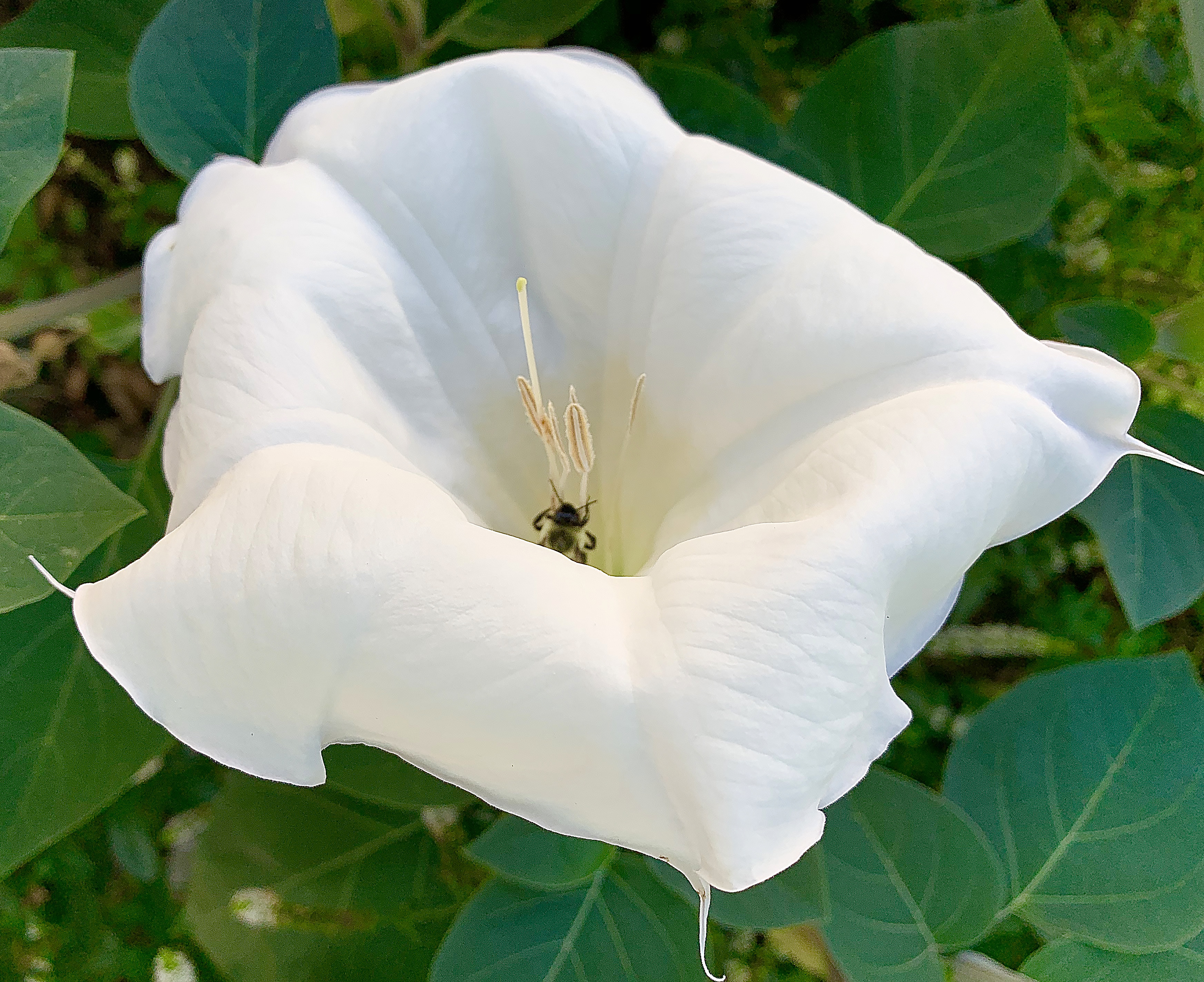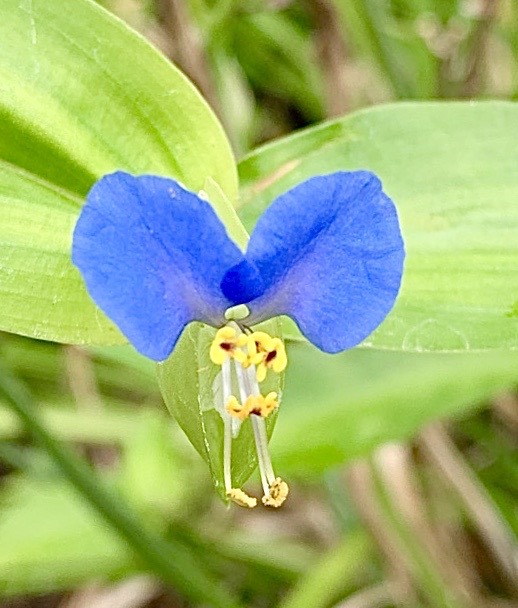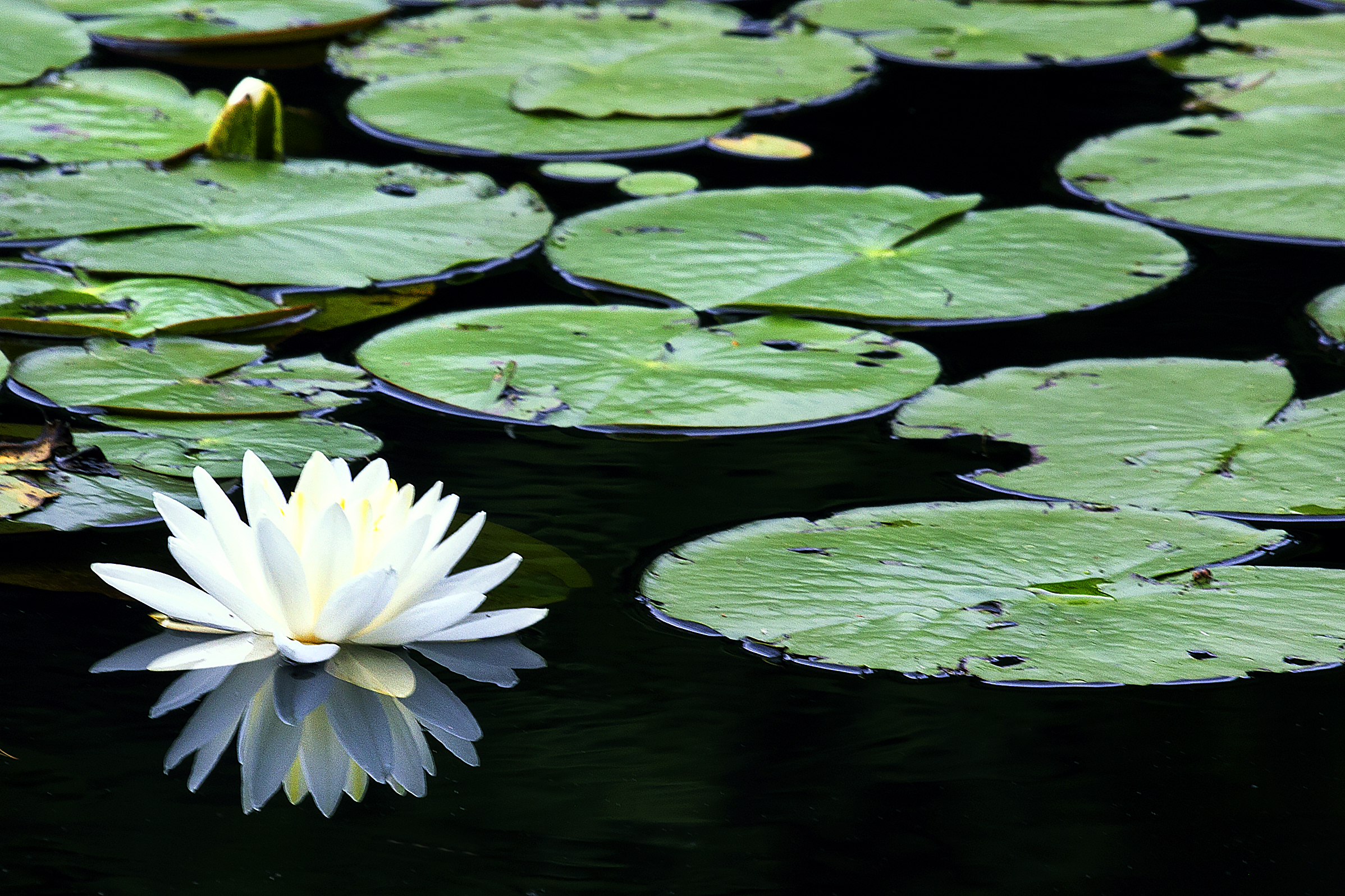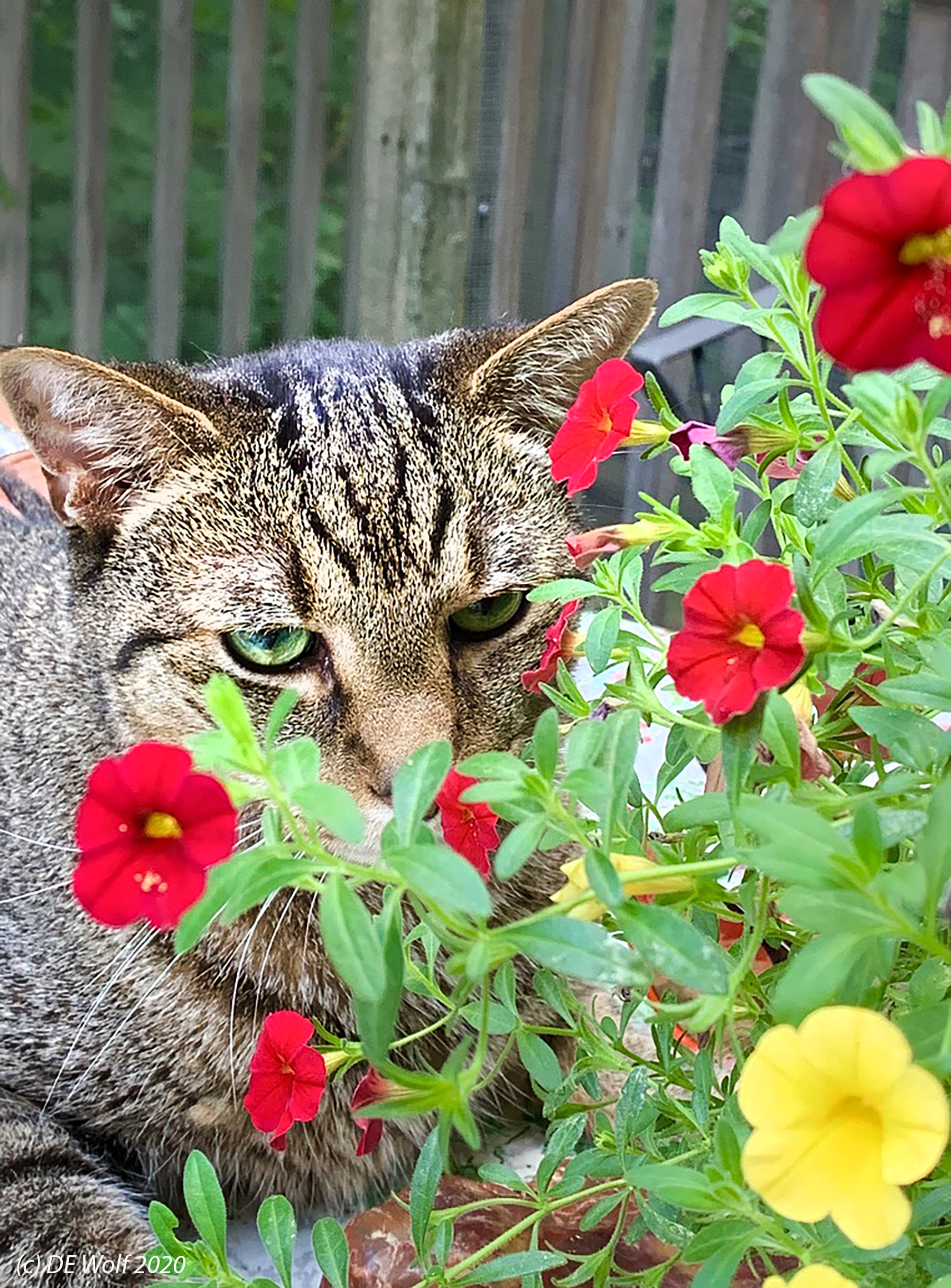A friend of mine presented me with this wonderful clay on jasper mineral specimen. I loved the abstract nature of it, and Figure 1 is my first attempt at photographing the piece. It is a black and white from an iPhone image turned into a delicate duotone. It is perhaps too contrasty, and I didn’t quite get the very top the way that I wanted it – a bit botched in the process of creating the perfect velvet black background. Still there is something very anthropomorphic about the object, reminiscent, I think, of some ancient fertility goddess. Of course, other angles give you something quite different, and therein lies the beauty!
Category Archives: Personal Photographic Wanderings
The Devil’s Trumpet
I have been having a wonderful time, in these golden dog days of August, photographing a flower a day. Using the app “plantnet,” I get to learn the names of ones that I am not familiar with. Today it is a the Devil’s Trumpet, Datura wrighti. Why the “devil’s trumpet?” What devilish work does it perform? As it turns out, all All Datura species are poisonous and potentially psychoactive. This is especially true of their seeds and flowers, which can cause respiratory depression, arrhythmias, fever, delirium, hallucinations, psychosis, and even death if taken internally. HIstorically, they have been used not only as poisons, but also as hallucinogens. They have, as a result, been associated with witchcraft and various forms of sorcery ( perhaps there is a Salem connection, as we head towards what will be a pathetic Halloween), and native Americans have used them ritualistically.
In Figure 1, I have captured one being visited by a honey bee. With this Devil background one starts to see them as ghostly specters against the dark leaves. Here they were tucked in a shady street corner.
The ephemeral
I was headed out on my morning walk today when I discovered this charmingly tiny (less than 3/4 “) and vividly blue flower of Figure 1, single flower on the stalk. It looked ever so much like an orchid, which in fact, it is not! I took the image and immediately fed it into the PlantNet app on my phone to discover that it is an Asiatic Dayflower (Commelina communis).
The story, I think, gets interesting from there. In the Northeast it is an invasive weed – despite being pretty. The reason that it is call a dayflower is that it blooms for a single day a year – so for this little guy/girl August 17, 2020. The wikipedia tells us all sorts of interesting things about this diminutive azure flower. First, Linnaeus described the species in the first edition of his landmark work, Species Plantarum, in 1753. Second, it can bioaccumulate a number of metals, which makes it a good candidate for revegetating and clean-scrubbing spoiled copper mines. Third, in China it is used as a medicinal herb with febrifugal, antipyretic, anti-inflammatory, and diuretic effects. And, finally, in Japan there is a dye industry associated with this plant, The colorant is known to have been used by famous Ukiyo-e artists such as Torii Kiyonaga.
For me however, it was a simple matter of enjoying the royal beauty of this miniature single-day blooming flower. Perhaps its ephemeral nature is symbolic of the finite nature of human life and how it is to be enjoyed, especially in the seeking of beauty and wonder in nature.
Reflections under the pier

Figure 1 – Reflections of the “When and if” under the ferry pier, August 10, 2020, Salem, MA. (c) DE Wolf 2020.
It’s been a while since I posted a purely abstract photograph. Today’s image, Figure 1, shows the reflections under the pier, where Patton’s “When and If” is docked. I was struck particularly by the brown distortions which are the reflections of the masts. Technically these distortions are colored caustic bands, which we have spoken about before. In a sense this photograph, like others, that I’ve taken recently screens of the dog days of summer, when the sky is bright, the skies are blue, and the air is hot!
August day on the beach

Figure 1 – August day on the Beach, Stage Fort Park, Gloucester, MA – August 8, 2020. (c) DE Wolf 2020.
Yesterday we drove up to Stage Fort Park in Gloucester, MA with the assumption that the crowds would be too large to risk or even to find parking. However success! The lot was nearly empty and the the beach was also largely devoid of people. So we had some nice social-distanced moments look at the rocks and dipping toes in the water with its gentle surf. The gulls and duck also kept their social difference as they observed us disinterestedly. The scene of Figure1, a kind of still life, for me completed the sense of a warm summer’s day in August. I a sense you almost feel as if you are transported into one of those summer seaside scenes from the Boston Impressionists, where all the ladies are in white. Here the sandals in the sand, the path of stones, and the seaweeds suggest the whole story.
Photopictorialism study #19 – The Path Through the Meadow

Figure 1 – Photopictorialism study #19, “The Path through the Meadow.” Rock Meadow Conservation Area, Belmont, MA. August 1, 2020. (c) DE Wolf 2020.
It has been almost a year since I last posted a photopictorialism study. The goal is to create an image that mimics, at some level, painting, particularly in the style of photo bromoil prints and impressionist painting. What these studies have taught me is the spectrum of techniques that can be used to add noise or confusion to a photograph, in a pleasing and artistic way – enhancing the story by shedding the detail.
Today’s image is the 19th such study in my collection. I call it “The path through the Meadow.” I took it last Saturday at Rock Meadow Conservation Area in Belmont, MA. From its conception, I knew that noise needed to be used to create a veil of mystery in the image. After all, we are never quite clear where a particular path will lead, and, of course, the very term path is an allegory for the journeys in our lives. A hot mid-summer evening, golden setting sun, a sultry atmospheric feeling. I added noise in the simplest of fashions using the “add noise” feature of Adobe Photoshop.
There are so many quotes concerning paths. I will resist Robert Frost and the Road not Taken and use instead
“There are no wrong turnings. Only paths we had not known we were meant to walk.”
― Tigana
Such is the fundamental philosophic conflict. Is our journey merely chaos? Is there a method to our madness, our seemingly mindless wandering? Or just possibly are we preordained to go this way?
Canon T2i with EF70-200mm lens at 70 mm, ISO 800, Aperture Priority AE Mode 1/250th sec at F/7.1, with no exposure compensation.
The white waterlily
Here is the ultimate return to childhood, summer days – the gentle rush of rowboat or canoe gliding over a crop of waterlily pads. Figure 1 shows a real beauty of a waterlily (Nymphaea odorata) gracing a pond in Concord, MA. The image is dominated by the intense white and the contrasting deep and mysterious darkness of the pond. The reflection seems, in fact, to show greater and subtler detail of grey in the petals than the flower itself which like Icarus ventures too close to the sun. Water lilies accentuate the quintessential quality of August’s dog days; sultry warm, high overarching cumulus clouds, and gentle breezes. Winter seems far away, but we are reminded that September and the transition to autumn will soon come to the world. The waterlily is the botanical analogue of the swan, brilliant and virgin white, gliding over the surface of the pond, reminiscent of eternity.
“The world must live. We are only one species among billions. The gods don’t love us any more than they love spiders or bears or whales or water lilies.”
Canon T2i with EF 70-200 L f/4.0 USM mm lens at 200 mm, ISO 200, Aperture Priority AE Mode, 1/125th sec at f/7.1 with -1 exposure compensation.
Monarch with Phlox
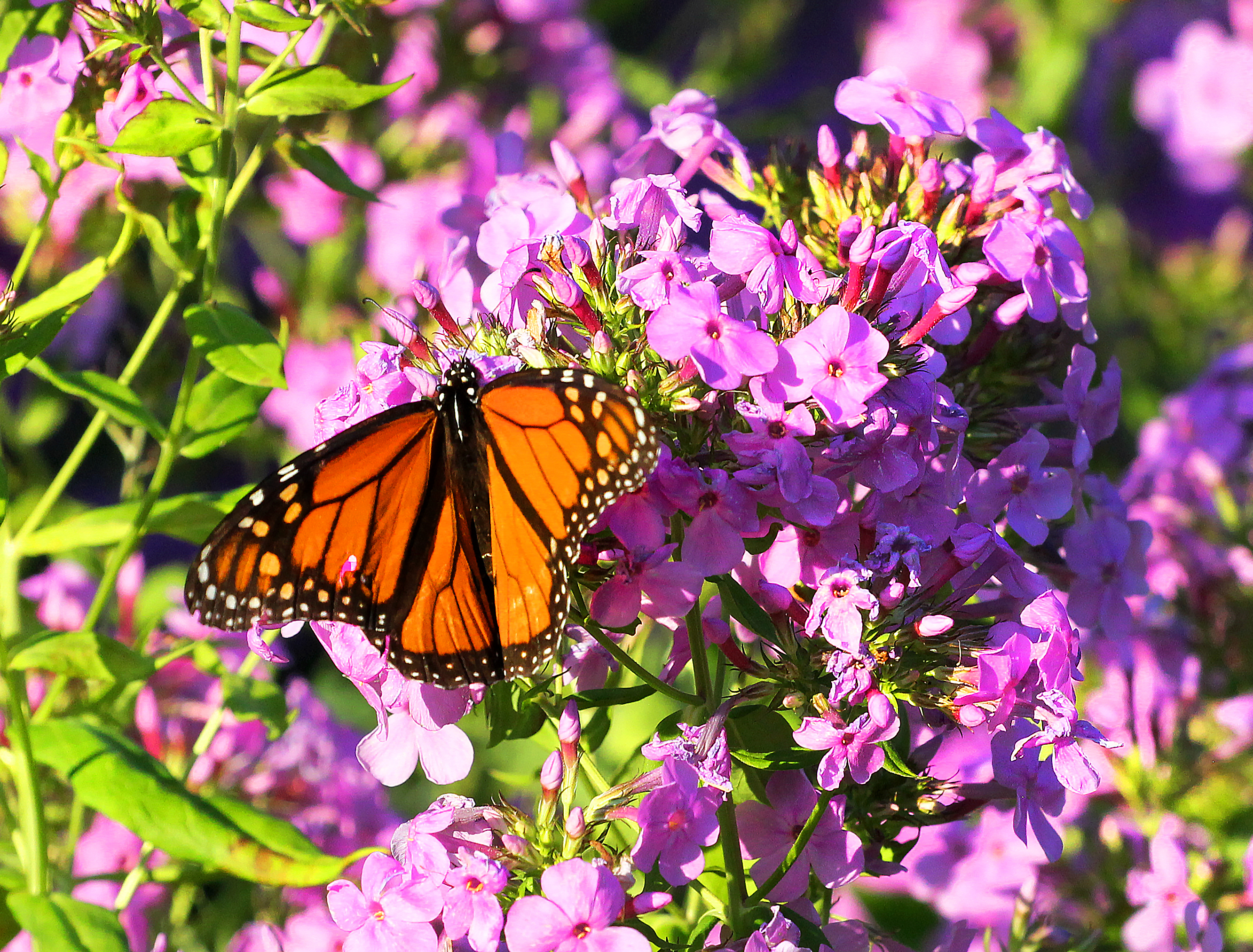
Figure 1 – Monarch butterfly on purple phlox, Rock Meadow Conservation Area, Belmont, MA, August 1, 2020. (c) DE Wolf 2020.
These are truly the glory days of summer, hot with luscious evening light. Such an afternoon was this past Saturday, and we visited the Rock Meadow Conservation Area in Belmont, MA. The flowers and the light were glorious, and the world was alive with buzzing bees and alighting butterflies. Figure 1 will serve as remembrance on a cold January day come winter. It shows a monarch butterfly (Danaus plexippus) dining on the nectar of a splendid display of pink phlox (Phlox maculata). I speak in superlatives because that is precisely what is needed to mentally make it through the current insanity.
I read an interesting article about how we can return to Henry David Thoreau’s Walden and the writings of Aldo Leopold in the 1930’s, both of whom record the dates of first flowering of species such as phlox, to find evidence of climate change. Systematically, over the course of some 160 years, flowers first appear earlier and earlier due to global warming. Indeed, flowers in Massachusetts typically appear six weeks earlier than they did in Thoreau’s time.
I guess that it all comes together in the very simple message to the fools in Washington, DC. Science is unrelenting. In science, Kellyanne, there are no “alternative facts“. Viruses and flowers obey the laws of nature, not political hype and fantasy.
Canon T2i with EF70-200L f/4.0 USM lens at 135 mm, ISO 800, Aperture Priority AE mode, 1/1300th sec at f/7.1 with no exposure compensation.
Mr. Pili takes the time to smell the flowers
My love of cats will come as no surprise to regular readers of this blog. So, today I wanted to share this photograph of Mr. Pili, who is outwardly a beautiful cat and inwardly a great philosopher. Mr. Pili joined us for a lovely Summer’s Saturday brunch on the deck. He paused a moment from basking in our adoration to smell the flowers. As always he taught us just a bit more about the important things and moments in life!


